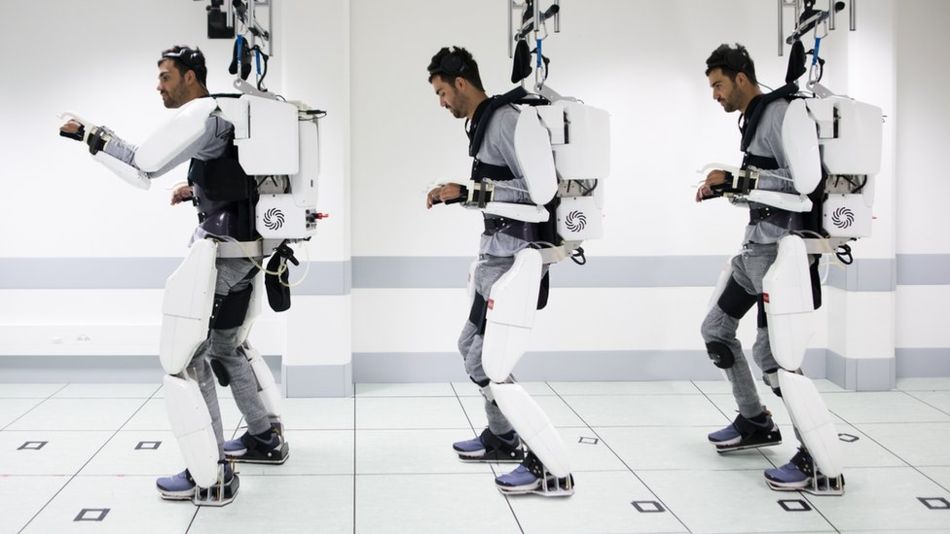
- Inspiring People -
- 4mins -
- 194 views
Paralysed man moves all four of his paralysed limbs using mind-reading exoskeleton
A quadraplegic man has been able to move all four of his paralysed limbs using a groundbreaking mind-controlled robotic exoskeleton, researchers in France announced.
Quadriplegic says first steps in robotic suit felt like being “the first man on the Moon”
A quadriplegic man has been able to move all four of his paralysed limbs using a groundbreaking mind-controlled exoskeleton, French scientists have said. The 30-year-old, known only as Thibault, said his first steps in the robotic suit felt like being “the first man on the Moon”. The system, which works by recording and decoding brain signals, was trialled in a two-year study by researchers at biomedical research centre Clinatec and the University of Grenoble.

Quadriplegic Man Uses Exoskeleton to Walk and Move Arms Again
French scientists have tested a new solution that proved capable of helping a quadriplegic man walk again, with control over all four mechanical limbs. — reported ExtremeTech
The work conducted at the Clinatec research center in Grenoble, France, initially focused on two patients, however one dropped out of the study due to a technical issue with the implants in question. The remaining individual, known only as Thibault, had a C4-C5 spinal cord injury and suffered from quadriplegia/tetraplegia as a result. Two implants with 64 electrodes each were implanted in the upper limb sensory-motor areas of his brain.
Epidural electrocorticographic (ECoG) signals were processed by a decoding algorithm and relayed to the artificial muscles of the exoskeleton to allow them to respond to the man’s thoughts.
Controlling the arms was apparently significantly more difficult than the legs, and the 65kg robot obviously doesn’t completely restore function.
Currently, the system only uses 32 electrodes on each 64-electrode chip, because they only have a 350-millisecond window to receive signals, decode those signals, and send the proper movement impulses back to the exoskeleton for moving.
The system as it exists today doesn’t yet allow for fully autonomous movement — Thibault is attached to the frame in a ceiling-mounted rig for additional security and safety. But this only makes sense when dealing with a quadriplegic patient with no ability to brace or protect themselves should the rig fall.
The trials the team conducted weren’t completely successful, but Thibault can perform trials that require him to touch a specific target by moving his arm and rotating his wrist 71% of the time.
The research team has plans to continue developing the interface, with a long-term goal of using the other 64 electrodes in the implant and using AI to predict muscle movements more quickly.
The next step is to develop finger controls so that Thibault can lift and manipulate objects, and he has also used the interface to control a wheelchair.
Details of the exoskeleton and research have been published in The Lancet.
Source: ExtremeTech







